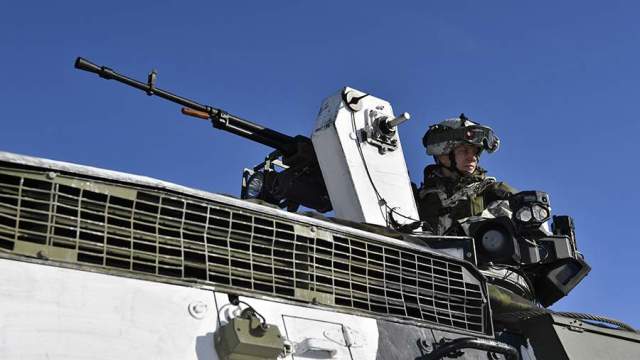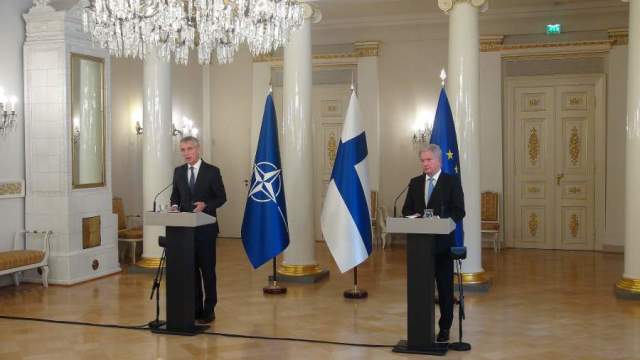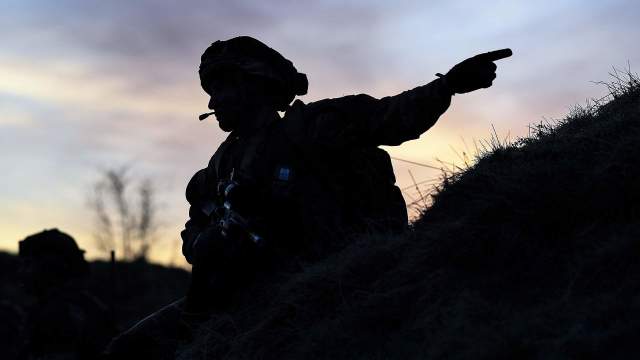Both countries risk losing more than winning
The expected accession of Sweden and Finland to NATO will not fundamentally change the balance of power, but may expand the scope of a hypothetical armed conflict. Izvestia analyzes the consequences of a possible expansion of the alliance.
Without panic, but with concerns
There is no need to wait for any obvious immediate negative consequences: neither Sweden nor Finland have unresolved territorial disputes or other conflicts with Russia that would be fraught with an inevitable military escalation in the coming years. At the same time, their accession to NATO in itself can seriously complicate the configuration of a possible armed confrontation, if it arises, raising the initial positions of the parties on the escalation ladder.
The key issue for Russia in this situation is the preservation of ties between the main territory of the country and the Kaliningrad enclave. Hypothetically possible communication by sea and air in the event of a conflict involving Sweden and Finland as NATO countries is almost guaranteed to be blocked. This automatically creates the need for Russia to unblock Kaliningrad in order to avoid its loss. Such an operation will almost inevitably be carried out by a land offensive through the territory of the Baltic states.

Pregoli Harbor in Kaliningrad
Image Source: Photo: TASS/Sergey Fadeichev
The scale of the conflict may be different, but the accession of Sweden and Finland to NATO will increase the existing imbalance of forces in favor of the alliance. This will inevitably force Russia to consider the possibility of using nuclear weapons in such a collision as a means to compensate for the lag in conventional weapons. This probability becomes all the more likely if substantial combat forces of the ground forces and aviation of the "old" NATO members are deployed on the territory of the Baltic states.
What is being added
Both countries have not the largest, but modern armed forces. The total number of Finland's peacetime armed forces is about 20 thousand people. At the same time, being completed according to a mixed scheme (permanent personnel + conscripts), Finns have a significant mobilization resource, which allows in case of war to increase the contingent to 150 thousand people and above. Finland has significant volumes of heavy weapons for a country with such a population, including tanks, artillery, multiple rocket launchers and aviation, and the latter will receive fifth-generation F-35 fighters in the foreseeable future.
The permanent strength of the Swedish armed forces is also low (less than 15 thousand people), which can also be significantly increased in case of mobilization due to the conscription of reservists who have previously completed military service. Initially, the number of the Swedish armed forces in the fully deployed version was set at 55 thousand people, but at the end of 2021 it was decided to increase this number to 90 thousand people. The peacetime army will also increase — the number of conscripts will increase from 4 thousand to 8 thousand people annually.

Photo: TASS/EPA/NAINA HELEN JAAMA
Image source: iz.ru
The country's military spending should also grow by at least 40%. By 2025, Sweden's annual military budget should be $11 billion. It should be noted, however, that spending on weapons has been growing continuously over the past years. According to the Stockholm Peace Research Institute (SIPRI), in 2016 these expenditures amounted to $5.43 billion, in 2017 — $5.53 billion, 2018 — $5.73 billion, 2019 — $5.84 billion and in 2020 — $6.45 billion. It is assumed that at current prices by 2025 they will amount to approximately $10.45 billion.
At the same time, taking into account the long-term underfunding of the Swedish armed forces in recent decades, this increase, according to some experts, is more likely to plug holes in the defense capability, rather than to ensure the rearmament of the army and improve its training.
Standards and approaches
Compatibility problems should not arise: both countries primarily use Western weapons, which are already available to many NATO member countries. Sweden, having a fairly developed defense industry, also actively supplies its own products, from anti-aircraft artillery to combat aircraft. Finland is also an arms exporter, which also produces a number of systems for export.
Problems may arise, rather, in terms of controllability and coordination: the growing alliance looks less and less like an effective military structure, from which, first of all, compactness, reaction speed and the ability to control the actions of heterogeneous forces are expected. In the case of NATO, which unites a huge number of very different countries and armies, operational cooperation becomes a key problem, burdened by a political factor: it will be difficult to combine the interests of a large number of such different actors, regardless of the reasons for the outbreak of war. Given the specifics of the North Atlantic Treaty, Article 5 of which does not at all provide for an "automatic declaration of war by all NATO members," as some think, the likelihood that the alliance will not be unanimous in the face of the threat of war with Russia is very high.

Secretary General of the North Atlantic Treaty Organization Jens Stoltenberg and Finnish President Sauli Niinisto at a joint press conference in Helsinki, October 2021
Image source: Photo: Global Look Press/dpa/Fabian Sommer
The main question for Sweden and Finland, however, is different: will the security of these countries increase from joining NATO in principle? The answer, in general, is not too comforting: in the event of a war with NATO, Russia will consider objects on the territory of the alliance countries as legitimate military targets, and on the territory of countries close to Russia — also as priority. Russia has already announced plans to increase its forces in the northwest. It is unlikely that this situation should be considered as advantageous for the security of all parties.
Olga Poplavskaya

